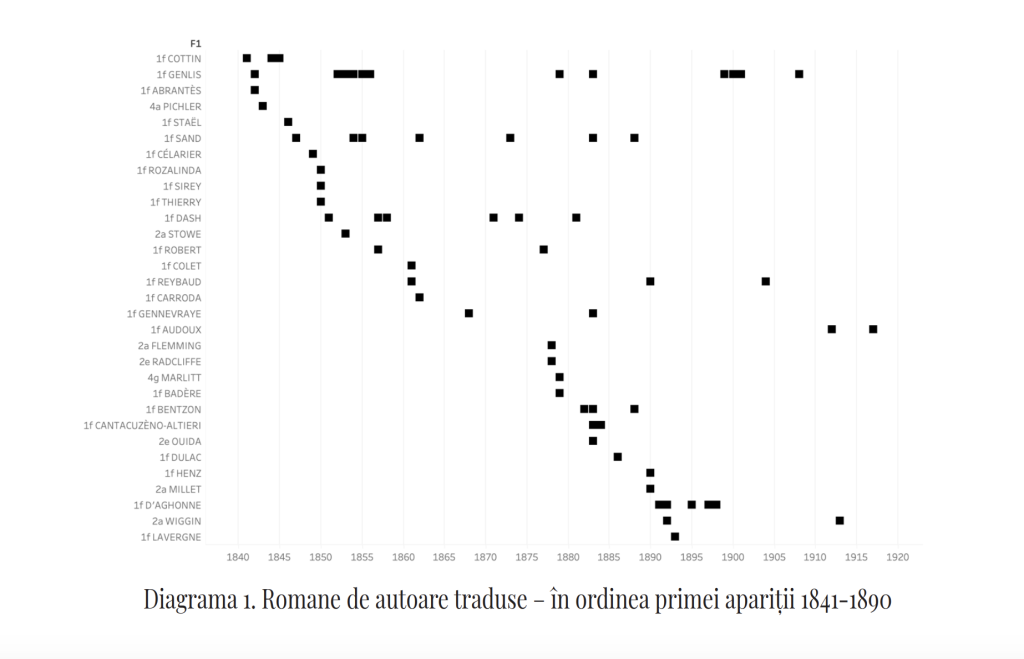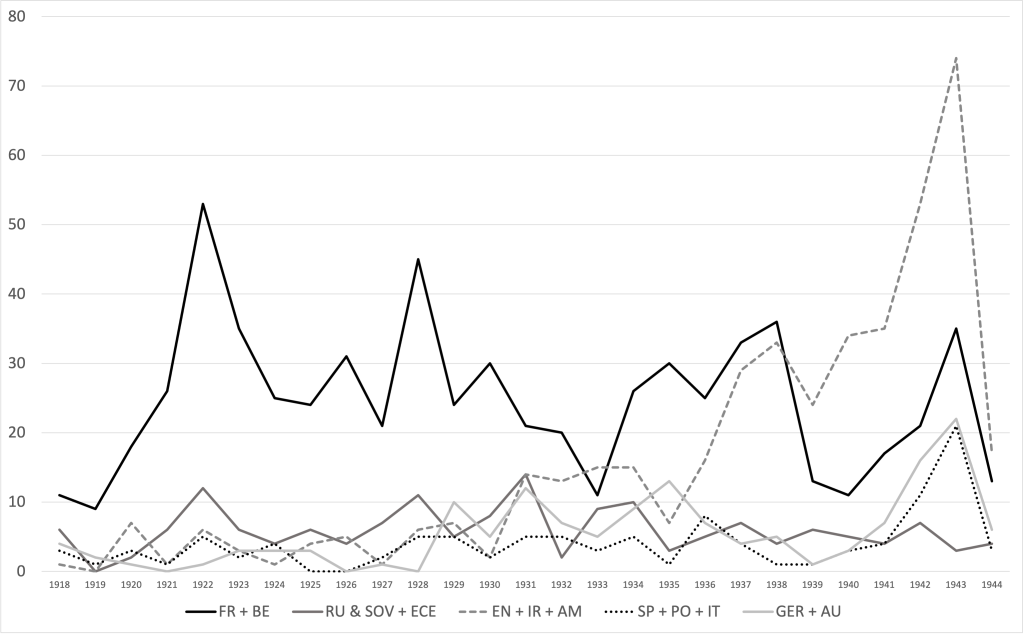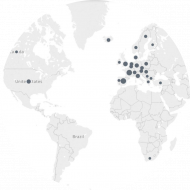The Long 19th Century: Proportions of Imports
The graph shows the proportion of the French novel and non-French novel (German, Russian, American, etc.) translated in Romania, after studying the proportions of renditions: “Although it has been constantly theorized and discussed as a phenomenon of cultural monopoly, the impact of French culture in the nineteenth century on small European and non-European cultures might have been underestimated in literary research. What the table above shows is quite impressive, even if this dominance was largely well-known: in every single way, the Romanian novel of the nineteenth century is radically dependent on the French one. (…) In short, in the long nineteenth century, almost 70% of translated novels are French. (more in the article).” (see Metacritic Journal for Comparative Studies and Theory 6, no. 2 (December 2020).

The Long 19th Century: Gender Distribution
“This article uses the data from the Chronological Dictionary of Novels Translated in Romania from its Origins to 1989 in order to chart the presence of foreign women novelists and their works in Romanian translation between 1841 (the year of the first translation of a novel originally written by a woman author, Sophie Cottin) and 1918 (the year marking the end of the long nineteenth century and the unification of Romanian provinces). The study separates two main periods, starting from the domination of the French novel: 1841-1890 and 1890-1918. The former period comprises more French novel translations, from authors such as Sophie Cottin, Stephanie-Felicité Genlis, George Sand, Countess Dash, M-me Charles Reybaud, and Mie D’Aghonne. The latter comprises Italian and American authors, such as Carolina Invernizio, Matilde Serao, Anna Katherine Green, Frances Elisa Hodgen Burnett, and even northern authors such as Clara Tschudi.”



The Interwar Period: Proportions of Imports


